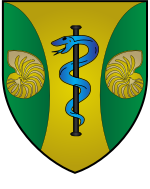
Somerville College, a constituent college of the University of Oxford in England, was founded in 1879 as Somerville Hall, one of its first two women's colleges. Among its alumnae have been Margaret Thatcher, Indira Gandhi, Dorothy Hodgkin, Iris Murdoch, Vera Brittain and Dorothy L. Sayers. It began admitting men in 1994. Its library is one of Oxford's largest college libraries. The college's liberal tone derives from its founding by social liberals, as Oxford's first non-denominational college for women, unlike the Anglican Lady Margaret Hall, the other to open that year. In 1964, it was among the first to cease locking up at night to stop students staying out late. No gowns are worn at formal halls.
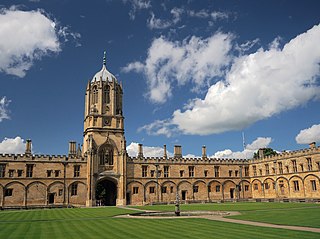
Christ Church is a constituent college of the University of Oxford in England. Founded in 1546 by King Henry VIII, the college is uniquely a joint foundation of the university and the cathedral of the Oxford diocese, Christ Church Cathedral, which also serves as the college chapel and whose dean is ex officio the college head.

Lady Margaret Hall (LMH) is one of the constituent colleges of the University of Oxford in England, located on a bank of the River Cherwell at Norham Gardens in north Oxford and adjacent to the University Parks. The college is more formally known under its current royal charter as "The Principal and Fellows of the College of the Lady Margaret in the University of Oxford".

Linacre College is a constituent college of the University of Oxford in the UK whose members comprise approximately 50 fellows and 550 postgraduate students.

St Anne's College is a constituent college of the University of Oxford in England. It was founded in 1879 and gained full college status in 1959. Originally a women's college, it has admitted men since 1979. It has some 450 undergraduate and 200 graduate students and retains an original aim of allowing women of any financial background to study at Oxford. It still has a student base with a higher than average proportion of female students. The college stands between Woodstock and Banbury roads, next to the University Parks. In April 2017, Helen King, a retired Metropolitan Police Assistant Commissioner, took over as Principal from Tim Gardam. Former members include Amanda Pritchard, Danny Alexander, Ruth Deech, Helen Fielding, William MacAskill, Simon Rattle, Tina Brown, Mr Hudson and Victor Ubogu.

St Benet's Hall was a permanent private hall (PPH) of the University of Oxford, originally a Roman Catholic religious house of studies. It closed in 2022. The principal building was located at the northern end of St Giles' on its western side, close to the junction with Woodstock Road, Oxford.

St Hugh's College is one of the constituent colleges of the University of Oxford. It is located on a 14.5-acre (5.9-hectare) site on St Margaret's Road, to the north of the city centre. It was founded in 1886 by Elizabeth Wordsworth as a women's college, and accepted its first male students in its centenary year in 1986. It enjoys a reputation as one of the most attractive colleges because of its extensive gardens.
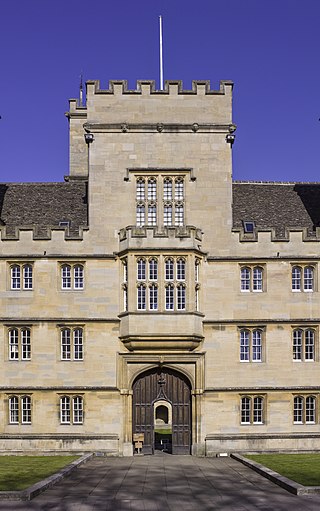
Wadham College is one of the constituent colleges of the University of Oxford in the United Kingdom. It is located in the centre of Oxford, at the intersection of Broad Street and Parks Road.

Wycliffe Hall is a Church of England theological college and a permanent private hall of the University of Oxford in the United Kingdom. It is named after the Bible translator and reformer John Wycliffe, who was master of Balliol College, Oxford in the 14th century.
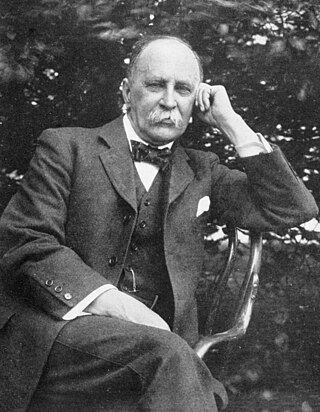
Sir William Osler, 1st Baronet, was a Canadian physician and one of the "Big Four" founding professors of Johns Hopkins Hospital. Osler created the first residency program for specialty training of physicians, and he was the first to bring medical students out of the lecture hall for bedside clinical training. He has frequently been described as the Father of Modern Medicine and one of the "greatest diagnosticians ever to wield a stethoscope". In addition to being a physician he was a bibliophile, historian, author, and renowned practical joker. He was passionate about medical libraries and medical history, having founded the History of Medicine Society, at the Royal Society of Medicine, London. He was also instrumental in founding the Medical Library Association of Great Britain and Ireland, and the Association of Medical Librarians along with three other people, including Margaret Charlton, the medical librarian of his alma mater, McGill University. He left his own large history of medicine library to McGill, where it became the Osler Library.

Kellogg College is a graduate-only constituent college of the University of Oxford in England. Founded in 1990 as Rewley House, Kellogg is the university's 36th college and the largest by number of students both full and part-time. Named for the Kellogg Foundation, as benefactor, the college hosts research centres including the Institute of Population Ageing and the Centre for Creative Writing. It is closely identified with lifelong learning at Oxford.
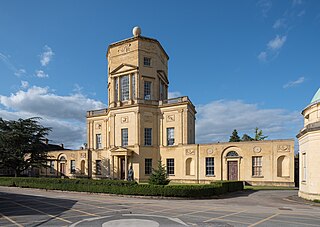
Radcliffe Observatory was the astronomical observatory of the University of Oxford from 1773 until 1934, when the Radcliffe Trustees sold it and built a new observatory in Pretoria, South Africa. It is a Grade I listed building. Today, the observatory forms a part of Green Templeton College of the University of Oxford.

North Oxford is a suburban part of the city of Oxford in England. It was owned for many centuries largely by St John's College, Oxford and many of the area's Victorian houses were initially sold on leasehold by the college.

The Acland Hospital was a private nursing home and hospital in central North Oxford, England, located in a prominent position at the southern end of the Banbury Road. It was founded in memory of Sarah Acland, the wife of Sir Henry Acland, Regius Professor of Medicine at the University of Oxford. Following redevelopment it now serves as graduate accommodation for Keble College.

Norham Gardens is a residential road in central North Oxford, England. It adjoins the north end of Parks Road near the junction with Banbury Road, directly opposite St Anne's College. From here it skirts the north side of the Oxford University Parks, ending up at Lady Margaret Hall, a college of Oxford University that was formerly for women only, backing onto the River Cherwell. Public access to the Parks is available from the two ends of the road. To the north of the road are Bradmore Road near the western end and Fyfield Road near the eastern end.

The Mathematical Institute is the mathematics department at the University of Oxford in England. It is one of the nine departments of the university's Mathematical, Physical and Life Sciences Division. The institute includes both pure and applied mathematics and is one of the largest mathematics departments in the United Kingdom with about 200 academic staff. It was ranked as the top mathematics department in the UK in the 2021 Research Excellence Framework. Research at the Mathematical Institute covers all branches of mathematical sciences ranging from, for example, algebra, number theory, and geometry to the application of mathematics to a wide range of fields including industry, finance, networks, and the brain. It has more than 850 undergraduates and 550 doctoral or masters students. The institute inhabits a purpose-built building between Somerville College and Green Templeton College on Woodstock Road, next to the Faculty of Philosophy.

Sir Edward Farquhar Buzzard, 1st Baronet, was a prominent British physician and Regius Professor of Medicine at the University of Oxford (1928–1943).

The Radcliffe Observatory Quarter (ROQ) is a major University of Oxford development project in Oxford, England, in the estate of the old Radcliffe Infirmary hospital. The site, covering 10 acres is in central north Oxford. It is bounded by Observatory Street and Green Templeton College to the north, the Woodstock Road to the east, Somerville College to the south, and Walton Street to the west. The project and the new university area is named after the grade I listed Radcliffe Observatory to the north east of the site, now the centrepiece of Green Templeton College, which is intended to form the visual centrepiece of the project.
The various academic faculties, departments, and institutes of the University of Oxford are organised into four divisions, each with its own Head and elected board. They are the Humanities Division; the Social Sciences Division; the Mathematical, Physical and Life Sciences Division; and the Medical Sciences Division.
Paul Bruce Beeson was an American physician and professor of medicine, specializing in infectious diseases and the pathogenesis of fever.

